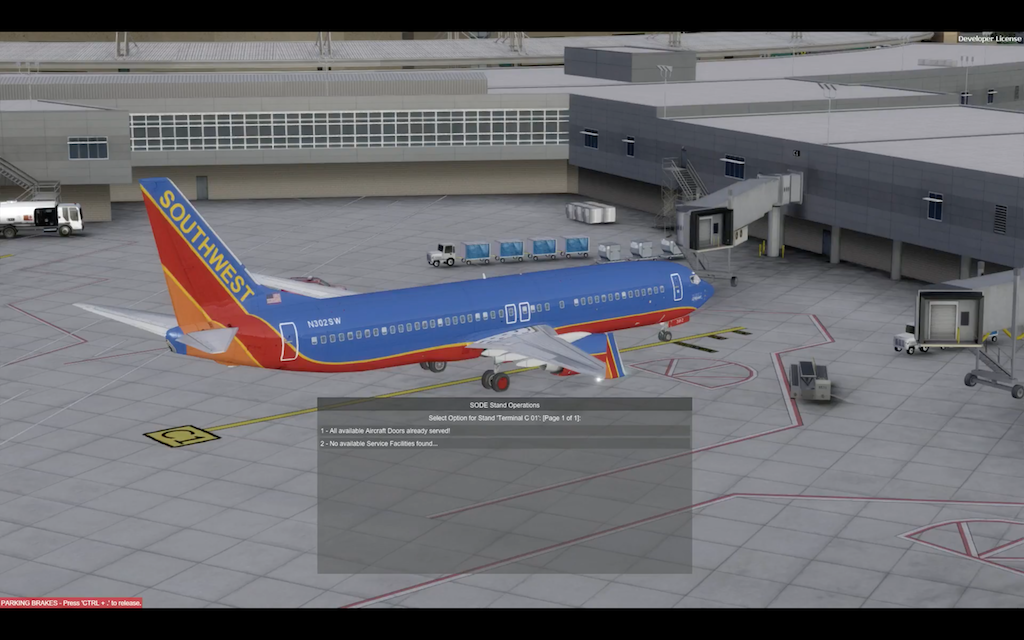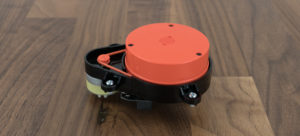Does your mobile phone provide better quality than a typical webcam? I'll test some virtual webcam software for mobile.
Driving a JetBridge
A self-driving AI powered JetBridge has the potential to save airlines billions in operating costs.
Self-driving cars using AI are fascinating, but they are super hard and complex to achieve. This is what I thought as my plane landed at the SFO airport. Andrew Ng’s Drive.ai vehicle driving at 25 mph in a limited-circuit Frisco office park is still complex and hard to achieve, but it isn’t going to set any land speed records (at least not today).
Is there something easier for us to take on? As the plane pulled up to the gate I thought I would have to think about this later. Unfortunately, ‘later’ came around immediately as we waited 10 minutes for the plane doors to finally open whilst the hapless ground crew tried to wrangle the Jet Bridge into place. I realized that in my years of travel this ‘waiting for the Jet Bridge’ was quite a common occurrence.
Thus it dawned on me that shortest distance, and possibly least complex, self-driving vehicle opportunity was mere feet from where I was sitting. The airport Jet Bridge.
Connecting a Jet Bridge to a plane is a basic exercise in geometry. You have a few pivot points and a single extension. “Driving” a Jet Bridge also involves a joystick. Since 99.9% of us don’t use a joystick that often nor understand geometry – it’s no wonder that properly connecting a Jet Bridge to match the side of an aircraft door is hard. Harder still if you’re sitting inside the plane waiting.
Since airports are busy and expensive, even learning to operate a JetBridge is costly. So costly in fact that one software company has a ‘game style’ JetBridge simulator to help train operators!

So it would seem a self-driving Jet Bridge would be easy. After all, it only has to drive 10 feet (3 meters) on flat ground and mostly only needs to watch out for something big, metal and shiny. But Jet Bridge tires often get ‘flat’ spots which affect their precise handling and a gate often supports different aircraft types during the day affecting the configuration.
The economic benefits of a self-driving Jet Bridge would be enormous. For a commercial airline, the cost of a plane sitting idle at a gate is ~ $65 per minute! If you could reduce the gate connection time by a mere 3 minutes this works out to a saving of $195 per gate movement (I didn’t factor in the undocking process). Considering that in the United States there are approximately 87,000 commercial aircraft movements per day, in theory you could save $17 million in a single day or over $6 billion a year.AI
Below is a list of US airports with > 100 gates and 3-minute reduction in gate time would generate nearly $2 billion in annual savings just for these 18 airports!

A new Jet Bridge typically has a cost of $500-800k and given the current inputs (an on/off switch and joystick) is not super complex. What would you need for a self-driving Jet Bridge?
- A handful of infrared cameras
- Some infrared lighting
- A Raspberry pi with some cables to the existing circuitry
- Very basic LIDAR to map the plane.
- Perhaps a 2nd camera into ensure the Bridge didn’t run over anyone below. The $99 Xiamoi LIDAR module (shown above) from a robotic vacuum cleaner would easily work.
Even at wild sum $500k per gate for the upgrade, the payback period for largest airports in the US is less than 6 months.
Southwest Airlines, a master of efficiency, is trying to launch a better jet bridge and Shinmaywa Industries in Japan has been working on a self-driving Jet Bridge They estimated the added cost for a self-driving newJetBridge to be less than $50,000.
The predominate supplier of Jet Bridges in the US is the $1 billion revenue JBT AeroTech Jetway Systems (whose current website doesn’t appear to have any job openings for those with machine learning or artificial intelligence skills).
Innovation on reducing boarding times included the ill-fated Double Docker system which connected two Jet Bridges to the front and rear exits of the plane. The rear Jet Bridge unfortunately spanned over the wing of the aircraft. This experiment came to an abrupt end when on March 31, 2007 the rear bridge fell on the wing of a parked United 757 at Denver’s airport. The message: experiment but don’t destroy. Most of the efforts to automate Jet Bridge operations have been limited to pre-set maneuvers and a large array of sensors.
Today there is much discussion about deep technology in artificial intelligence which is well beyond the knowledge of a normal reader. As well, AI applications remain futuristic and out of reach to the average business. The opportunity remains to couple business application with the technology available to us now.